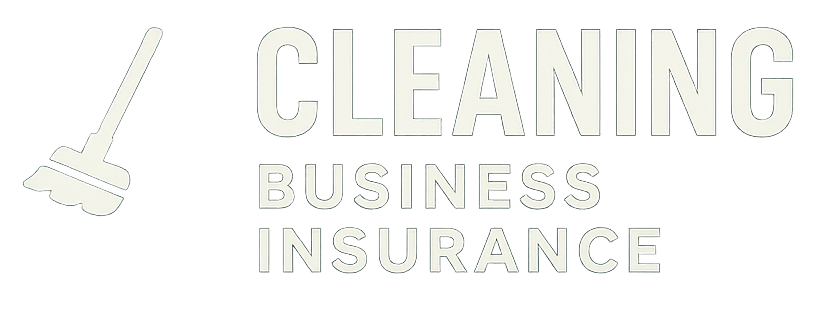California is well-known for its sunny weather, but in recent years, extreme heat events have become more frequent and severe. For cleaning businesses operating in residential, commercial, or industrial settings, these conditions can pose significant challenges. Employees are at higher risk of heat-related illnesses, equipment may fail more quickly, and operations can be disrupted, potentially leading to financial losses. Protecting your cleaning business during these extreme heat events is essential for employee safety, client satisfaction, and overall business continuity.
Understanding the Risks of Extreme Heat for Cleaning Businesses
Cleaning businesses face unique risks during heatwaves. Employees often work outdoors while handling heavy equipment, moving trash, or cleaning expansive areas such as parking lots and sidewalks. Even indoor environments can become dangerous if air conditioning is limited or poorly ventilated. Prolonged exposure to high temperatures increases the likelihood of dehydration, heat exhaustion, and heatstroke, which can have severe health consequences.
Beyond employee safety, extreme heat can also impact cleaning equipment and supplies. Heat-sensitive chemicals may degrade faster, cleaning solutions could evaporate more quickly, and vehicles used for transportation or hauling may experience overheating or mechanical failure. These factors can slow down operations, reduce efficiency, and increase operational costs, all while heightening liability risks for your business.
Preparing Your Cleaning Team for Heat Events
Employee safety is the top priority during extreme heat events. To protect your cleaning team, it’s essential to provide proper training on recognizing the signs of heat-related illnesses, such as dizziness, rapid heartbeat, nausea, or confusion. Employees should be instructed to take regular breaks in shaded or cool areas, stay hydrated with water or electrolyte beverages, and wear lightweight, breathable clothing suitable for the heat.
Scheduling adjustments can also play a critical role in reducing heat exposure. Consider starting work earlier in the morning or later in the evening when temperatures are lower. Limiting strenuous tasks during peak afternoon heat hours can help prevent injuries and illness. Maintaining a culture of communication, where employees feel comfortable reporting symptoms or requesting breaks, is crucial for preventing accidents and claims.
Adjusting Equipment and Cleaning Supplies
Extreme heat not only affects people but also cleaning equipment and materials. Ensure that chemical solutions and cleaning agents are stored in shaded or climate-controlled areas to prevent degradation. Pressure washers, vacuums, and other electrical equipment should be monitored closely, and vehicles used for transportation should be routinely checked for overheating risks.
Using insulated containers for chemicals, keeping backup supplies on hand, and implementing regular equipment maintenance routines can help reduce downtime caused by heat-related malfunctions. Proper storage and handling are essential not just for operational efficiency but also for compliance with safety standards and liability coverage.
Operational Strategies to Maintain Productivity
During heat events, maintaining consistent productivity without compromising safety requires careful planning. Rescheduling certain outdoor or physically demanding cleaning tasks, staggering work shifts, and prioritizing urgent jobs are effective strategies. For instance, high-intensity tasks like parking lot sweeping, exterior window cleaning, or pressure washing may be shifted to cooler hours of the day.
Investing in technology can also improve efficiency. Mobile apps for scheduling and task management can help track employee workloads, locations, and break times. Additionally, leveraging automated cleaning tools or equipment designed to withstand higher temperatures can minimize strain on your staff while keeping projects on schedule.
Health and Legal Considerations
California has strict workplace safety regulations, especially concerning heat exposure. The California Division of Occupational Safety and Health (Cal/OSHA) mandates that employers implement a heat illness prevention plan, which includes providing water, shade, rest breaks, and training for employees working in extreme heat conditions. Failing to comply with these regulations can result in penalties and increased liability for your cleaning business.
Ensuring compliance not only protects your employees but also helps safeguard your business from costly lawsuits or insurance claims. Documenting safety procedures, training sessions, and employee check-ins can serve as evidence of your proactive approach in case of disputes.
Insurance Considerations for Extreme Heat
Extreme heat can increase operational risks and may influence insurance claims. Property damage, equipment failures, and employee injuries caused or exacerbated by high temperatures could lead to claims under general liability or workers’ compensation policies. Understanding how heat-related incidents affect your coverage and reviewing policy limits with your insurance provider can help ensure your cleaning business is fully protected.
Additionally, investing in a Business Owner’s Policy (BOP) that includes coverage for property and equipment, along with liability protection, can provide added security. Knowing your policy’s terms and conditions allows you to plan ahead for extreme weather events and minimize financial disruption.
Building a Culture of Safety
Ultimately, protecting your cleaning business during California’s extreme heat events requires a combination of preparation, training, and operational adjustments. Establishing a culture of safety where employees understand the risks and responsibilities associated with heat exposure is critical. Encourage open communication, regularly update safety protocols, and continuously monitor weather forecasts to anticipate extreme conditions.
By prioritizing employee well-being, maintaining equipment, adjusting schedules, and ensuring proper insurance coverage, cleaning businesses can continue operating safely and efficiently even during California’s hottest days. Proper preparation not only reduces the risk of injury or equipment failure but also demonstrates professionalism to clients and strengthens your business’s reputation.
